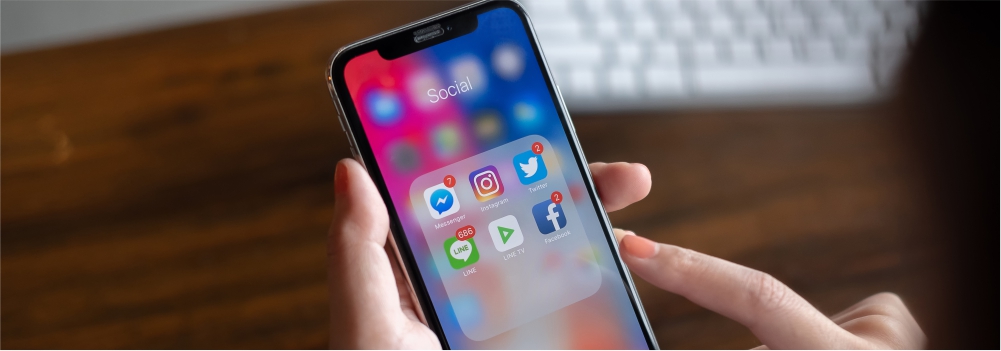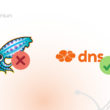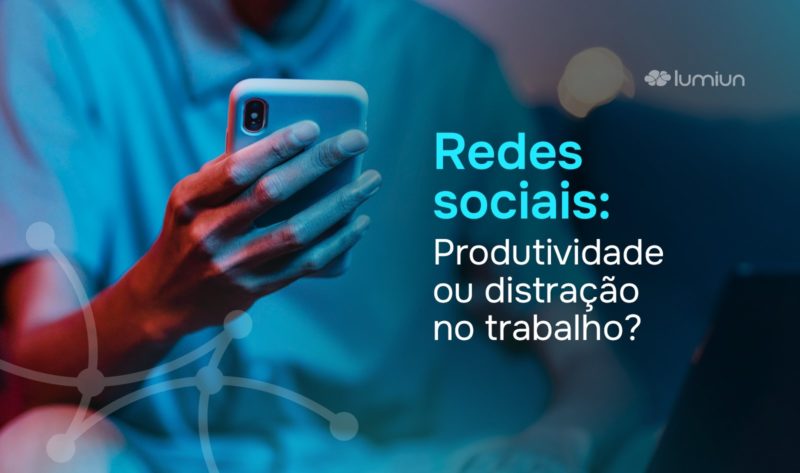Brazilians currently rank second in the world in terms of number of hours on social media. There are just over nine hours a day connected to the internet and more than three hours spent on social media, according to a study by the agency We Are Social . This number has increased considerably with the growth of remote work, as companies from different sectors implement this type of work.
It would be ignorant to think that the use of social networks, the internet and, especially, cell phones does not occur during working hours. Of course, there are positions and functions that need to be used, but, in most organizations, cell phone use can cause distractions, loss of income, workplace accidents, among many other problems.
Considering these factors, we prepared material that demonstrates the relationship between the use of social networks at work and productivity.
Productivity

networks have become a widely used tool in different professional contexts . However, although they are very useful in some cases, the use of social networks at work also has a major impact on productivity .
When used correctly, social networks help facilitate communication , contribute to the dissemination and promotion of the company's brand and offer an efficient platform for continuous learning . On the other hand, when used inappropriately or excessively, employees can lose focus and impair their efficiency at work .
It is essential to have effective control over the use of social networks in the workplace . With clear guidelines on the use of these tools for non-professional purposes, it is possible to avoid losses and ensure greater productivity within the company .
The absence of a clear and defined policy on the subject can lead employees to use these tools for personal matters during company hours , causing dispersion and waste of time .
Tools and methodologies for efficient time management in the face of digital distractions
The modern workplace faces a major challenge: time management . Therefore, with the growth and proliferation of digital distractions, there is a significant risk to productivity and efficiency during work activities . For this reason, it is essential to adopt tools and methodologies to ensure efficient time management , avoid digital distractions, set deadlines, prioritize tasks and increase efficiency.
Therefore, resources like Trello and Asana are essential to help organize tasks and monitor the progress of activities . With the help of these platforms, employees can improve their daily lives and avoid wasted time and unproductivity caused by social networks .
The Pomodoro technique and similar techniques optimize work by combining periods of concentration with short breaks, promoting a healthier and more efficient work environment.
Another very efficient methodology is the Eisenhower Matrix , which helps categorize tasks based on their importance and urgency, allowing employees to establish realistic priorities . Thus, by combining these tools and methodologies, and relying on distraction blocking applications , it is possible to limit access to social networks during working hours , maintaining focus on important tasks.
Social media

As mentioned previously, social networks can be used strategically in the company's day-to-day activities, contributing to digital marketing , communication with customers and networking . However, when not used with a specific function related to the company, social networks at work can become a constant source of distractions , diverting not only employees' attention, but also putting the organization's cybersecurity .
Without proper regulation, social media at work can become a real problem. Therefore, it is essential that organizations establish precise guidelines and communicate them to employees in a clear and constant way , encouraging the responsible use of these tools and the focus on professional activities.
Therefore, to contribute to this control process, companies can use tools for monitoring and blocking digital resources . These solutions help control access to platforms such as social networks, minimizing distractions and risks to information security.
Distraction and loss of focus with social media
Social networks are designed to maximize the time users spend on their platforms. This characteristic, combined with ease of access, can lead employees to become distracted by personal updates , social interactions or irrelevant content, harming productivity at work.
In other words, the constant switching of tasks, known as multitasking , can have a major impact on the company's productivity. When employees constantly switch between work tasks and social media, it can take their brains longer to adjust their focus, resulting in wasted time and process errors . Furthermore, multitasking can also increase stress levels , making employees feel overwhelmed with managing multiple sources of information.
In this sense, it is crucial that the company establishes a work environment that minimizes digital distractions . So, this could include creating device-free zones , implementing regular breaks for employees to check social media in a controlled way, and promoting a culture of focus and productivity .
Constant notifications and multitasking: the fragmented attention trap
Constant notifications on social media are a real trap for employees' attention . Each alert, whether a new message or update, can cause significant interruptions in the workflow, fragmenting the individual's attention and compromising the quality of the tasks performed.
Second, research carried out by the Wall Street Journal , attention is resumed after at least 23 minutes of interruption , demonstrating how much time can be lost with these excessive notifications. In other words, this continuous cycle of distractions significantly reduces productivity and the quality of tasks performed on a daily basis .
Furthermore, multitasking, although it has been encouraged for many years, harms the quality and performance of work . When employees alternate between different activities with different focuses, they may not be able to dedicate themselves fully to any of them.
To avoid fragmented attention, it is necessary to establish periods of work without external interruptions , which can be through focus hours policies , applications aimed at productivity and even controlling and blocking social networks . It is also necessary to educate employees about the negative effects of multitasking to help them adopt a targeted approach to relevant tasks, avoiding distractions in the digital environment.
How social networks fragment attention and reduce the ability to concentrate at work
Social networks are designed to capture and retain users' attention through constant updates and highly engaging content . This dynamic, although effective for platforms, can hinder concentration on prolonged tasks in the workplace.
This means that the fragmentation of attention caused by social media platforms not only interrupts workflow, but also makes information processing more superficial, making it difficult to carry out activities that require analysis and critical thinking.
Therefore, algorithms that promote more relevant or popular content can cause a real addiction to constant checking. Employees may feel increasingly compelled to check social media repeatedly, even without notifications. This break in focus harms the continuity of the company's essential tasks.
It is necessary to promote employee awareness about the impacts of social networks on focus and concentration . Workshops and training help you understand how distractions affect productivity and the importance of staying focused.
Social networks as portals to the outside world: the temptation of procrastination
On social media, we can find a multitude of attractive and varied content , which can be tempting and lead us to procrastination. Therefore, easy access to videos and information facilitates distraction with non-work-related tasks, aggravated by constant pressure.
Procrastination motivated by social media is a common problem that leads to reduced productivity , loss of quality and delay in completing tasks . When employees focus on irrelevant activities, they not only waste time, they also experience a loss of rhythm , making resuming work increasingly difficult.
Controlling internet access can be an effective measure to combat procrastination. Furthermore, promoting an organizational culture that values responsibility and transparency is essential. By establishing clear goals and deadlines for their activities, employees feel more motivated and productive. Furthermore, constant and regular feedback on processes helps keep all employees focused , productive and engaged with the company's tasks.
The fascination with irrelevant content and the difficulty in staying focused on tasks
While it can be fun, irrelevant content is one of the main reasons why social media becomes a real problem in the workplace. In other words, the variety of content on social networks captures employees' attention, diverting them from work tasks.
This irrelevant content may provide a temporary sense of escape from the pressures of the workplace , but it causes problems in the long term. The result is lower efficiency and productivity , as well as frustration and dissatisfaction.
Furthermore, the difficulty in regaining focus after consuming this type of content can lead employees to perform their tasks superficially, with less attention to detail. Therefore, excessive consumption of these contents , combined with constant switching between tasks, can also affect the ability to think critically and solve problems.
Online conversations and interactions: the seduction of in-person communication
communication via social networks , such as WhatsApp , Facebook and Instagram, can divert employees' attention from their responsibilities. In other words, this excessive use for personal purposes can compromise productivity and focus at work.
The situation worsens when social networks address emotionally or potentially problematic , distracting employees and reducing their focus on the company's tasks. The informality of these interactions can create the mistaken impression that spending time on personal matters is acceptable, compromising efficiency.
Therefore, implementing a policy that clearly defines social media use and in-person communication during work hours can help establish expectations and boundaries. Furthermore, education about the impact of personal communication on work activities is also crucial to maintaining a productive environment.
The use of social networks for personal purposes during working hours: an invitation to unproductivity
The unrestricted use of social networks during working hours can reduce employee productivity and focus, negatively impacting the company's results.
In other words, this behavior can generate a cycle of unproductivity , in which the employee is distracted for long periods, which directly impacts the delivery of their activities. The negative impact of social media on productivity can be more severe in roles that require constant attention and focus skills . Furthermore, this practice can negatively influence other employees, creating a work environment where digital distractions become common.
To minimize this problem, it is essential to implement a clear policy on the use of social networks and offer training that emphasizes the importance of concentration and focus on tasks . Furthermore, the adoption of tools to monitor the use of these platforms can help control the time dedicated to personal activities during working hours.
Excess of information and mental overload: the FOMO syndrome (Fear of Missing Out)
FOMO (Fear of Missing Out) syndrome is a growing phenomenon in the digital age, where individuals experience a constant feeling that they are missing out on something important . This phenomenon can cause significant mental overload , impacting productivity and quality of work.
Excess information and the constant updating of feeds on social networks can generate significant mental overload, causing stress and anxiety in employees. Information overload can compromise decision making and create continuous distraction, harming productivity.
To combat FOMO syndrome, it is important for companies to implement information management strategies and promote a culture of focus and efficiency . This may include limiting time devoted to consuming non-work-related information and promoting periods of digital disconnection to allow employees to focus on their tasks.
Additionally, encouraging self-care practices and offering psychological support can help minimize the impact of FOMO syndrome on employees' mental health and productivity .
Tips for reducing the impact of social media in the workplace
To minimize the impact of social media and ensure productivity, it is essential to have a clear policy regarding its use during working hours . Companies must set clear expectations to reduce ambiguity and promote a more disciplined work environment.
In addition to these policies, it's helpful to implement tools that help employees manage their social media usage. There are applications that limit the time spent on social networking sites or block access during certain periods . When these tools are not enough, the company must adopt a more strategic and intelligent solution, such as access control tools for certain websites and content .
Additionally, encouraging regular breaks and digital disconnection, a culture of regular breaks and digital disconnection will help employees step away from screens while carrying out important tasks, combating the constant urge to check platforms during work hours. The expected result is an improvement in workers' focus and productivity, as well as significant benefits for their health and well-being.
To help you, here are some tips on how to use social media responsibly in the workplace:
- Focus on one social network at a time: Being connected to several social networks at the same time can scatter your attention. Focus on a social network and check notifications just to see if they are really important.
- Manage conversations on messaging apps: Apps like WhatsApp and Telegram can be great sources of distraction. Avoid responding to conversations that are not relevant to work.
- Control notifications: Leaving social networks open and with constant notifications can give the impression that you are free to respond. Set aside specific times to check messages and notifications, like during your lunch break or a snack.
- Avoid email notifications: Receiving social media notifications in your corporate email can be a huge distraction, especially if you use email frequently. Configure your accounts to not send these notifications to your corporate email.
- Don't keep your cell phone close at hand: Having your cell phone within reach all the time can lead to constant curiosity about notifications. Keep your cell phone out of your sight and hands to avoid unnecessary distractions.
- Use vibrate mode sparingly: Vibrate mode may seem less intrusive, but it can still interrupt your concentration . Set it so that only important calls ring and avoid answering contacts that are not urgent.
Cell phone use policy in the workplace
An effective policy on cell phone use in the workplace must be adapted to the specific characteristics of each company and its activities. A well-defined policy helps regulate the use of mobile devices and access to social networks during working hours, without interfering with employee productivity.
Companies can use resources such as the cell phone usage document template , which provides guidelines and practical examples for implementing the policy within the organization. It is essential to communicate this policy transparently and provide easy access for all employees, holding training sessions to ensure everyone understands the rules and the reasons behind them.
Employees must understand that implementing a cell phone usage policy is not a punitive strategy, but rather a tool to provide a more harmonious and efficient work environment . The company must be willing to receive feedback from employees and adjust policies as necessary to strike a balance.
However, according to a survey conducted by the Pew Research Center , 77% of workers use social media regardless of these policies, suggesting that the effectiveness of these measures may vary. For this reason, the implementation of other solutions is necessary, such as internet access control.
Social networks at work: challenges and solutions for productivity
Social media can harm productivity at work, with distractions that reduce efficiency and cause errors. Constant notifications and the temptation to check for updates interrupt your workflow, affect focus, and can lead to mental health issues like stress and anxiety.
To mitigate the impacts of social networks, it is essential to create usage policies and monitor access to these platforms. This limits access while working and helps maintain a more productive environment.
In addition to investing in time management tools to limit access to social media, a multidisciplinary approach can be customized to meet the needs of each organization, providing a balance between personal and professional use of these tools.
Promoting awareness about the impacts of social media on productivity and mental health is also crucial. It is necessary for the company, in addition to teaching time management techniques, to help employees stay focused with other solutions, such as controlling access to platforms .
Finding balance in your use of social media
To optimize productivity and promote a healthier work environment, it is essential to find a balance in the use of social media . By allowing moderate use of social media, without compromising professional responsibilities, companies can create a more positive and productive environment.
This means having platforms that allow controlled use of social networks , enabling access at specific intervals so that employees can check their updates without compromising their tasks. This way, employees will be able to connect without compromising their responsibilities, understanding the importance of separating personal time from work time.
Leadership must adopt and follow social media usage policies to serve as an example, promoting productivity and efficiency. Furthermore, the company must listen to employees' concerns to meet their needs fairly.
Benefits of controlling the use of social networks at work
Controlling access to the internet and social networks reduces distractions, allowing employees to focus more on their tasks. This increases efficiency and quality of work, ensuring faster and more accurate deliveries.
Another great benefit is related to the mental health of employees . Constant exposure to social media can lead to information overload and feelings of anxiety and stress , problems that can be combatted with assertive control. Implementing policies that limit the use of these platforms helps reduce negative impacts and provides a calmer, less stressful work environment.
Limiting access to social media creates a more productive environment, encouraging focus, collaboration and alignment with organizational goals.
Management challenges

Managing the use of social media at work is challenging. It is necessary to balance control and freedom, limiting excessive use that affects productivity, but respecting the rights of employees.
Extremely restrictive policies can be invasive and generate dissatisfaction among staff , while a lack of control can result in lost productivity. It is necessary to evaluate the company's needs and characteristics and have customizable tools that increase productivity without adopting an abusive approach.
Another challenge to be considered is the diversity of attitudes and needs among employees. While some employees may use the platforms to distract themselves, others may use them to stay updated and contribute to their professional growth. Management must consider different perspectives and needs when developing policies and guidelines and when choosing more assertive control tools.
The evolution of technologies and social networks challenges organizations. Companies must adapt their policies to new trends to improve efficiency.
All of this is possible through a flexible approach and a continuous process of communication with employees. Having efficient and complete tools can also make all the difference, helping to control these distractions more effectively without resorting to excessive control.
To the next!










15 comments
Comments closed